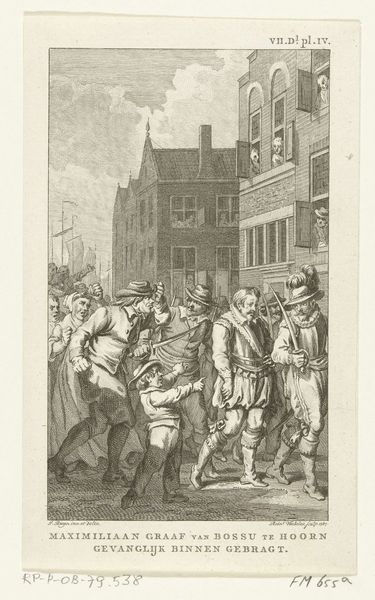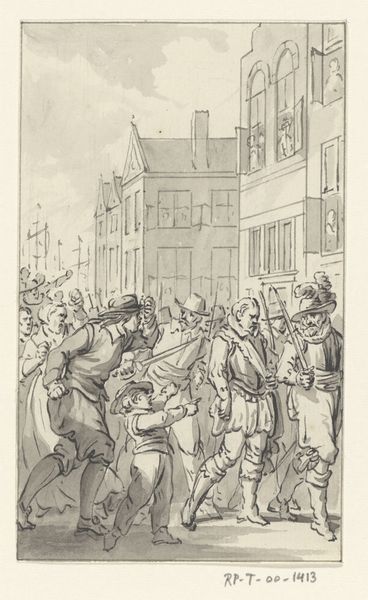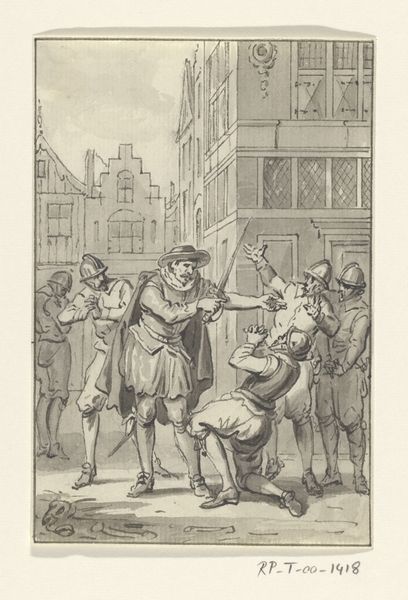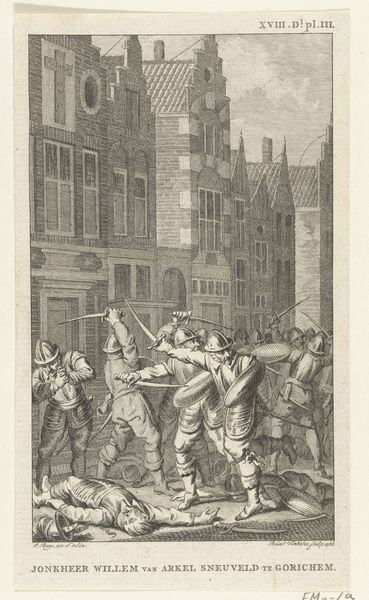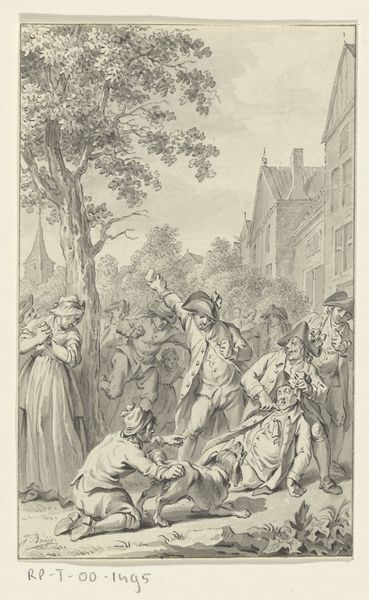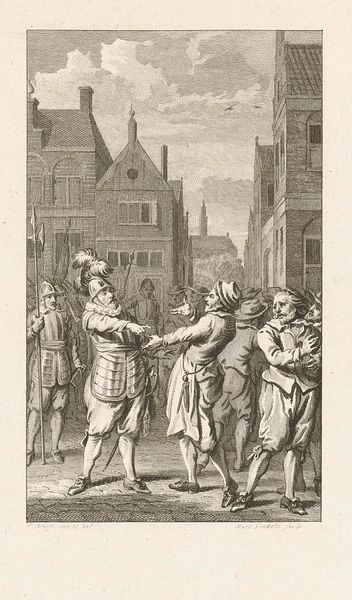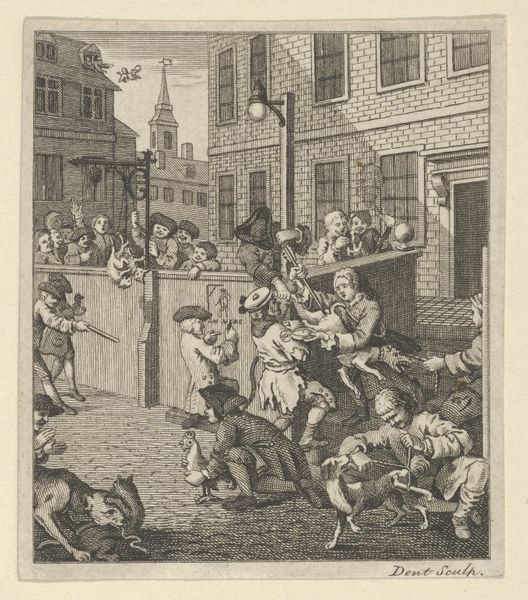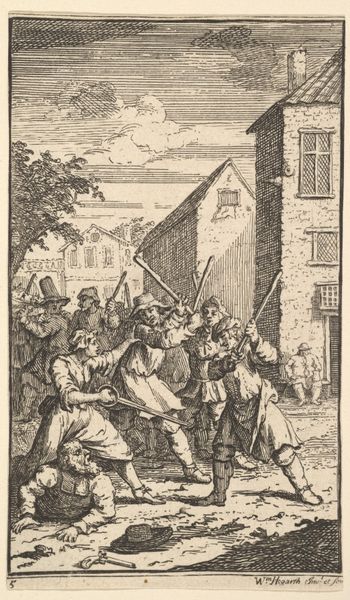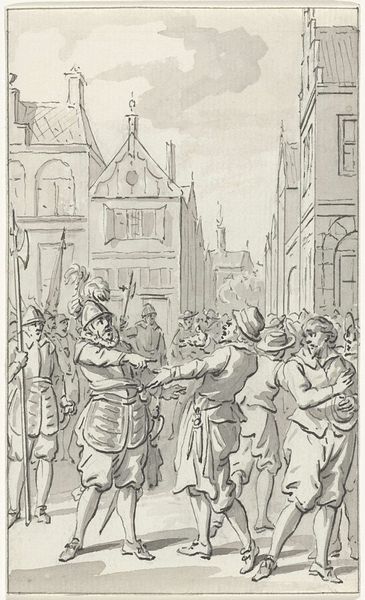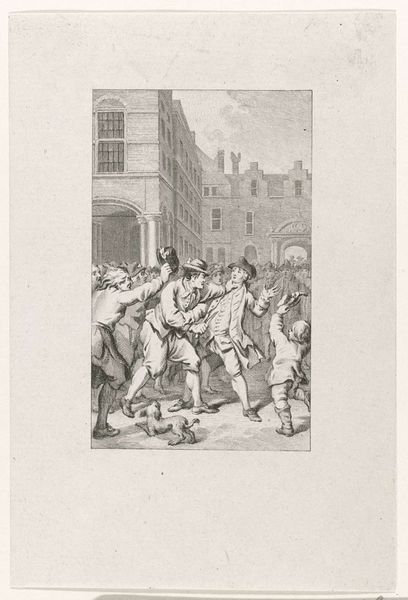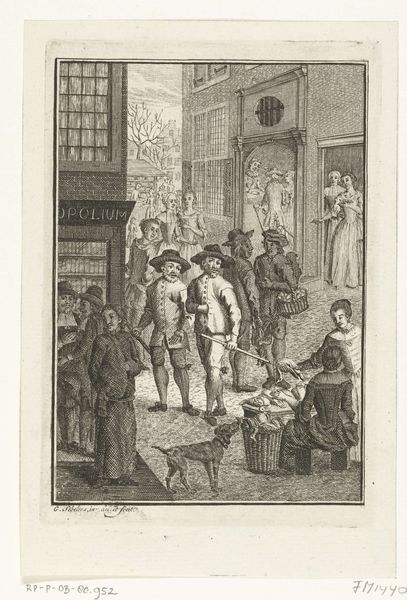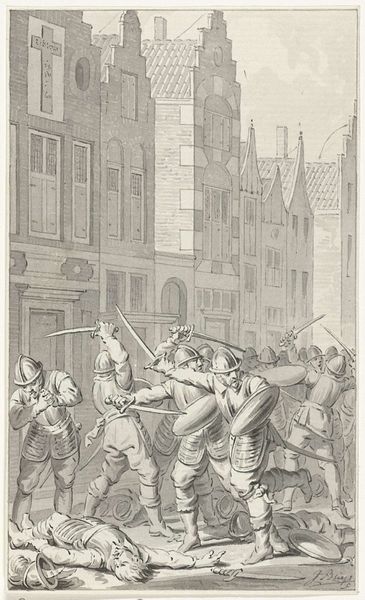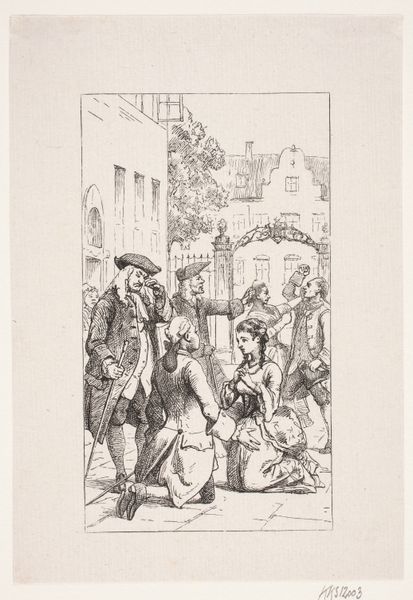
Maximilien de Hénin-Lietard, graaf van Bossu, als krijgsgevangene in Hoorn binnengevoerd, oktober 1573 1785 - 1787
0:00
0:00
jacobusbuys
Rijksmuseum
drawing, paper, ink, engraving
#
drawing
#
narrative-art
#
dutch-golden-age
#
figuration
#
paper
#
ink
#
cityscape
#
genre-painting
#
history-painting
#
engraving
Dimensions: height 150 mm, width 90 mm
Copyright: Rijks Museum: Open Domain
Editor: This is "Maximilien de Hénin-Liétard, Count of Bossu, Entering Hoorn as a Prisoner of War, October 1573," a drawing in ink on paper by Jacobus Buys from the late 1780s. I’m struck by how immediate the scene feels, almost like street photography, despite depicting an event from over two centuries prior. What can you tell me about it? Curator: It's interesting to consider this work in terms of the production of historical narratives. Look at the deliberate use of line and wash, the mass-produced nature of engravings allowing for widespread dissemination of this historical event. We see not just a moment frozen in time, but a consciously manufactured image meant for consumption, to influence opinion and construct a specific understanding of the Dutch Golden Age. How might the materiality of this engraving affect the perception of the depicted events? Editor: So, the act of making the drawing itself is as important as what it depicts? Curator: Precisely! Consider the labor involved: from the artist Buys, who rendered the scene, to the engraver, and then the printer. Each step shapes the final product, influencing how viewers would have understood this historical event. How does understanding the context of printmaking alter our understanding of this image as propaganda? Editor: I see what you mean. The image isn’t just a neutral record, it’s a crafted message distributed via a very specific, mass medium. It’s meant to portray a very specific view of a historical event to the Dutch population, cementing this narrative in their cultural understanding. Curator: Indeed! And by considering the paper, ink, and engraving processes, we reveal the ways in which material conditions can actively participate in the creation of history. Editor: This has given me so much to think about regarding the choices, methods, and labor of creating history, both literally and figuratively! Curator: Yes, thinking about art through the lens of production allows us to challenge its apparent neutrality.
Comments
No comments
Be the first to comment and join the conversation on the ultimate creative platform.
